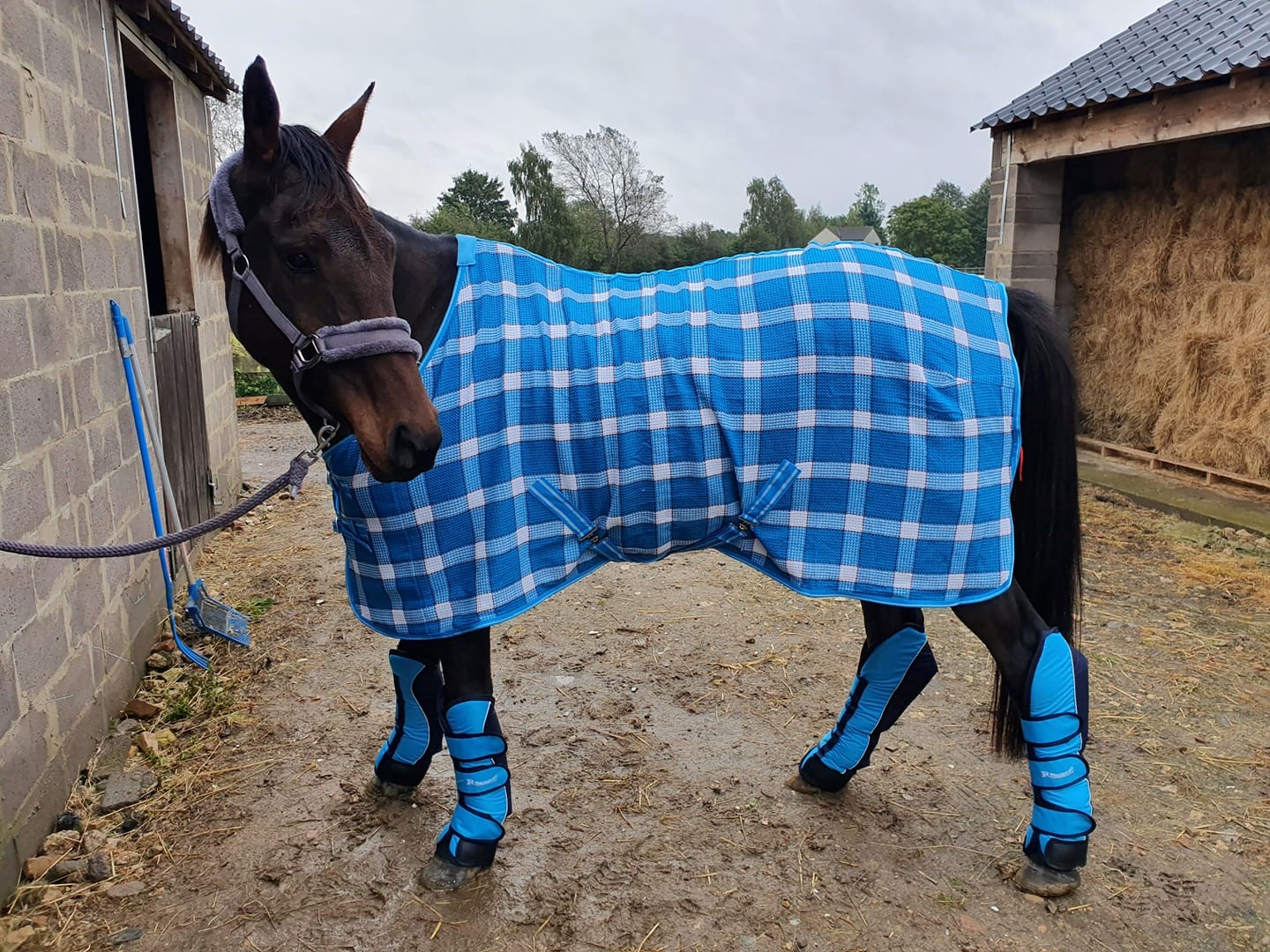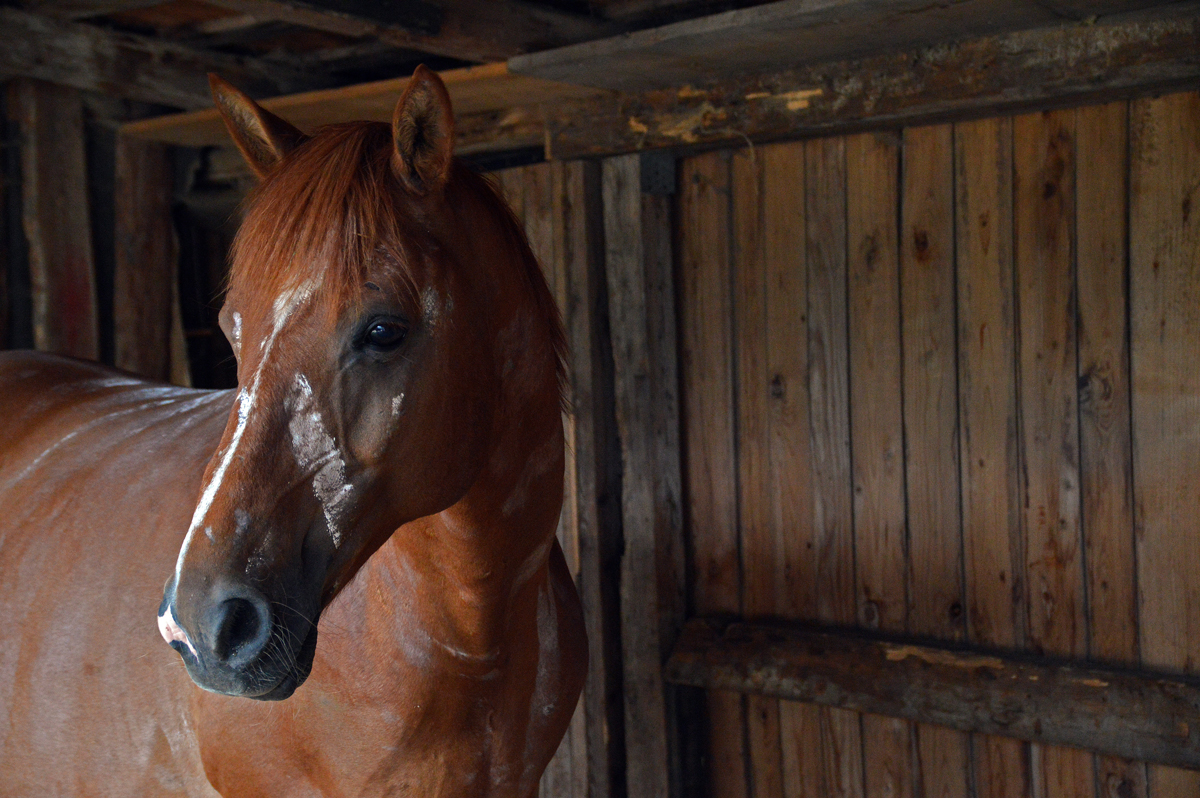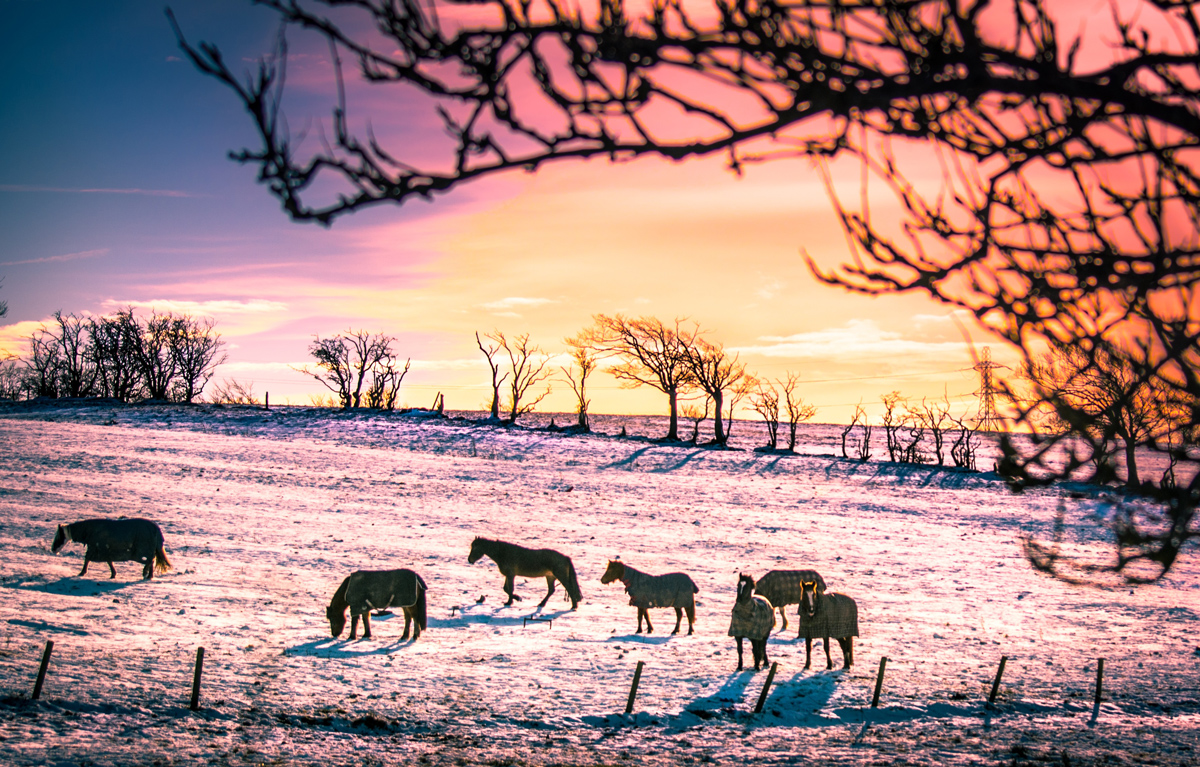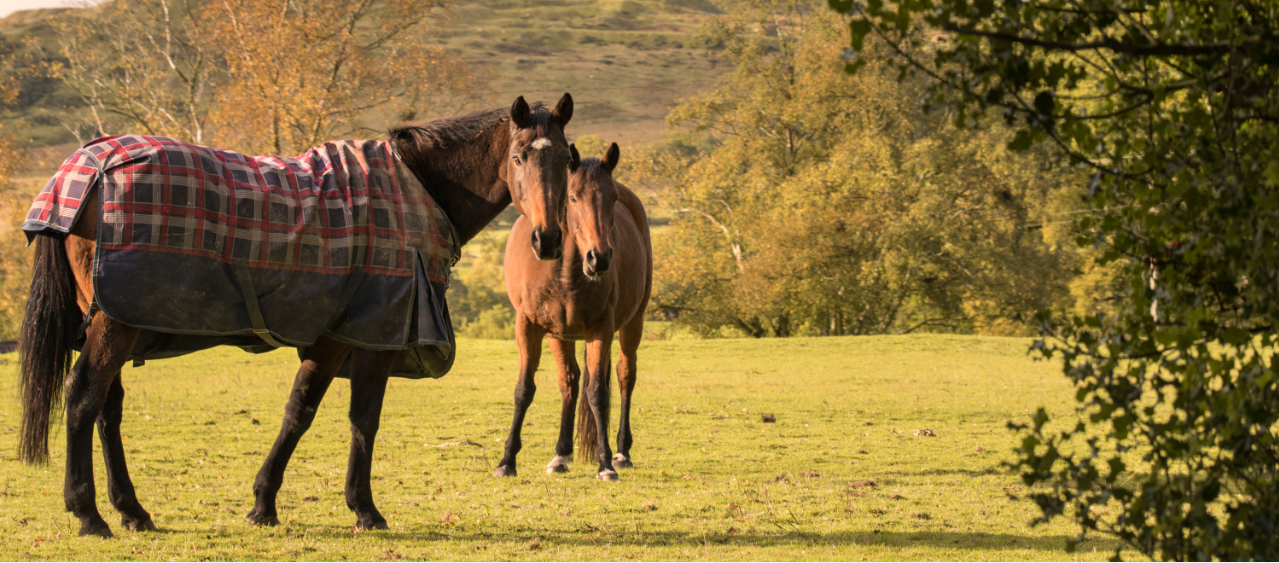When the weather turns chilly, humans wrap up warm but horses depend on their owners to keep the cold at bay. Knowing when and how to rug a horse is a complex matter, with lots of factors to consider.
Of course, maintaining your horse at a comfortable temperature is all part of a good health routine. Being a responsible horse owner also means taking out horse insurance to protect your wonderful animal.
Horses in the wild
When they live in the wild, horses cope perfectly well with a wide variety of climates and weathers.
Through evolution, horses have developed ways to cope with cold weather that are not reliant on their human friends warming them with a rug.
Domestic horses do not live exactly like their wild relations, but it’s important to understand the animal’s natural defences against chill.
Care should be taken when working with horses in extremes of heat or cold – equines gain heat slowly and lose it slowly, and they can experience colic symptoms if body temperature becomes either too high or too low.

Horses and cold
The most important thing to know about horses and rugging is that equines do not feel cold in the same way as humans.
People have a ‘thermoneutral zone’ of between 25-30°C – the ambient temperature that feels comfortable for us.
Horses, on the other hand (or should that be hoof?) only feel cold when the temperature dips below 0°C or rises above 25°C.
This means that we shouldn’t assume that a horse is feeling chilly just because we are; our bodies work differently.
Factors that affect horse bodily temperature
Horses with food in their belly produce heat through normal digestive processes. Heat either comes from breaking down food in cody cells or fermenting fibre in the hindgut.
When it gets cold, a horse’s metabolic rate increases to produce more heat. If it needs to, the horse reduces blood flow to the limbs and may start to shiver.
This is an energy-intensive system, which is why horses who are rugged unnecessarily may gain excess weight as they are not using calories to say warm.
Horses naturally seek out shelter where they can keep warm and stay out of the wind and rain, whether this is a built structure, a hedge or tree or nestling against another horse.
They also have an instinct to minimise the impact of weather by turning their backs to the wind and rain.

Horses have a thick coat to prevent heat loss from their bodies, so the rate of heat loss is much slower than it would be for a human. Heat can be lost through respiration, faeces and urine and contact with cold surfaces.
Horses have thicker coats in winter, and can also respond to changes in temperature by standing their hairs on end to trap warm air.
A natural oil coats horse hair, especially the thicker winter coat. This keeps the horse warm and dry – care should be taken not to remove this protective oil through over-grooming.
It’s not only digestive muscles that produce heat.
Horses use their large body muscles to keep warm, playing and moving around when it’s cold.
They also keep on the move constantly as they graze, which is why they should always have ready access to forage.

When should you rug a horse?
Over-rugging a horse can be harmful.
For example, the hair erector muscles will become less efficient when a rug is used. Horses may also gain weight when a rug is used, leading to associated problems such as laminitis.
Breeds with naturally shaggy coats, such as Shetland Ponies, are less likely to need a rug.
Rugging should be done only after other measures to help keep the horse warm. This includes providing shelter, forage, companion horses and avoiding over-grooming or clipping.
If a horse has restricted movement or a shorter coat, this makes it more likely that they will need a rug.
You can check your horse’s temperature by feeling in the armpit or close to the skin. Feeling the ears, face or legs is a bad way to work out if the horse is cold. Instead, check for hair standing on end.
Feel behind the wither – if it’s cold, a rug (or extra rug) may be needed. If it feels damp, the horse is too hot and may need a rug to be removed.
A thermometer outside the stable can also be useful, so you know the actual temperature rather than relying on how cold you feel.
The basic principle is that a horse should not need rugging until the temperature reaches 5-10°C, unless they are old, young, underweight or clipped, or if they live outside all the time.
If rugs slip, the horse looks uncomfortable or is shivering or sweaty, immediate action may be required to help rectify the horse’s temperature.
Not acting in time may harm the health of the horse, resulting in vet’s bills and a claim on your horse insurance policy.

Choosing a rug
A rug should be chosen depending on the individual needs of each horse.
This includes age, condition, breed, health and temperament as well as the physical environment. Older horses feel the cold more, as do those with poor appetites or who move less.
It goes without saying that the rug should fit the horse well, and a rug should only be used when necessary.
The best option is to use a horse’s own ability to thermoregulate through measures like eating, movement and seeking shelter.
Bathing in cold weather can also be an issue for horses, especially when cold rather than warm water is used.
A wicking rug should be applied to dry a horse after bathing, ensuring the horse is fully dry before a rug is applied for warmth.
Otherwise, the horse may end up in a cold, wet rug that could cause a chill. Wicking rugs should also be used after exercise to help a horse cool down to its normal level after the exertion.
Horse insurance from Equesure
Helping your horse stay at the right temperature is just one part of being a responsible equine owner.
Do you need horse insurance you can rely on? Contact Equesure for a quote today.







